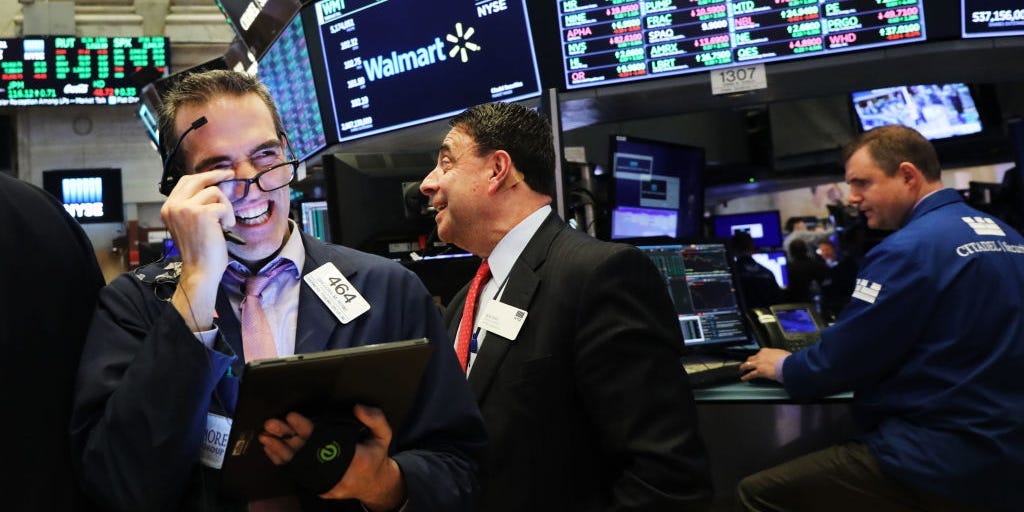
Spencer Platt/Getty Images
- US futures inched higher on Monday as investor attention turned to key job data expected later this week.
- The monthly US employment report acts as a major gauge of the strength of the economic recovery.
- Oil traded close to 2018 levels ahead of this week's OPEC+ policy meeting.
- See more stories on Insider's business page.
US futures edged up on Monday as investors' attention turned to US non-farms payroll data on Friday, which will give an indication of how consistently the economy is recovering from the pandemic and what that might mean for the outlook for inflation.
Inflation typically rises at times of sustained, strong economic growth. The last report showed evidence of a labor shortage, which could renew concern about a more prolonged rise in inflation that could force the Federal Reserve to wind down its support for the economy more rapidly.
Nasdaq futures were last up by 0.23% at 4:14 am E.T. on Monday, while S&P futures inched 0.05% higher. Dow Jones futures were down 0.06%.
Analysts appear to be expecting non-farms payrolls to increase by 600,000-700,000 for June, which would, in theory, keep the unemployment rate below pre-pandemic levels.
"We strongly suspect that labor market strains will linger for several more months given we are now entering school summer holiday season and for most people the Federal benefits will continue through to September." ING economists noted.
The yield on the US 10-year Treasury note was last at 1.517%, down by 1.9 basis points. Yields have fallen by around 10 basis points in the last month, as the Fed has helped soothe the more acute fears over a rise in inflation with its repeated pledges to maintain its current level of support for the economy.
Oil traded near three-year peaks on Monday, reaching its highest since late 2018. Brent crude was last trading at $75.20 per barrel, down 0.24%, while WTI crude was at $73.92 per barrel having dipped by 0.18%.
The OPEC+ producer group meets this week and are likely to discuss supply policies as crude output elsewhere, most notably in the US, slowly returns to pre-pandemic levels.
"I expect them to ease production cuts further, but not by too much. I believe Brent crude in a $70.00 to $80.00 range is the groupings' happy place. Filling their coffers, but not upsetting the Americans too much." Jeffrey Halley, senior market analyst for OANDA said.
European markets eased in early trading. Frankurt's DAX was last down 0.16%, while the Euro Stoxx 50 noted a 0.51% decline and London's FTSE 100 was trading 0.48% lower.
A slew of economic data is expected in Europe this week, including preliminary inflation data for June for major economies such as Germany and France. Inflation in the eurozone rose to its highest level since November 2018 in May and the European Central Bank is expecting a substantial jump from 0.9% to 1.6% in the second quarter of 2021.
Asian markets had a muted start to the week and closed almost flat across the board. Tokyo's Nikkei 225 ended the trading day 0.06% lower, while the Shanghai Composite lost 0.03% and Hong Kong's Hang Seng index was down 0.04%. Rising Covid-19 cases affected markets as lockdown restrictions were extended and the vaccination roll-out continues to be unequal and slow, indicating that post-pandemic economic recovery may be delayed.
